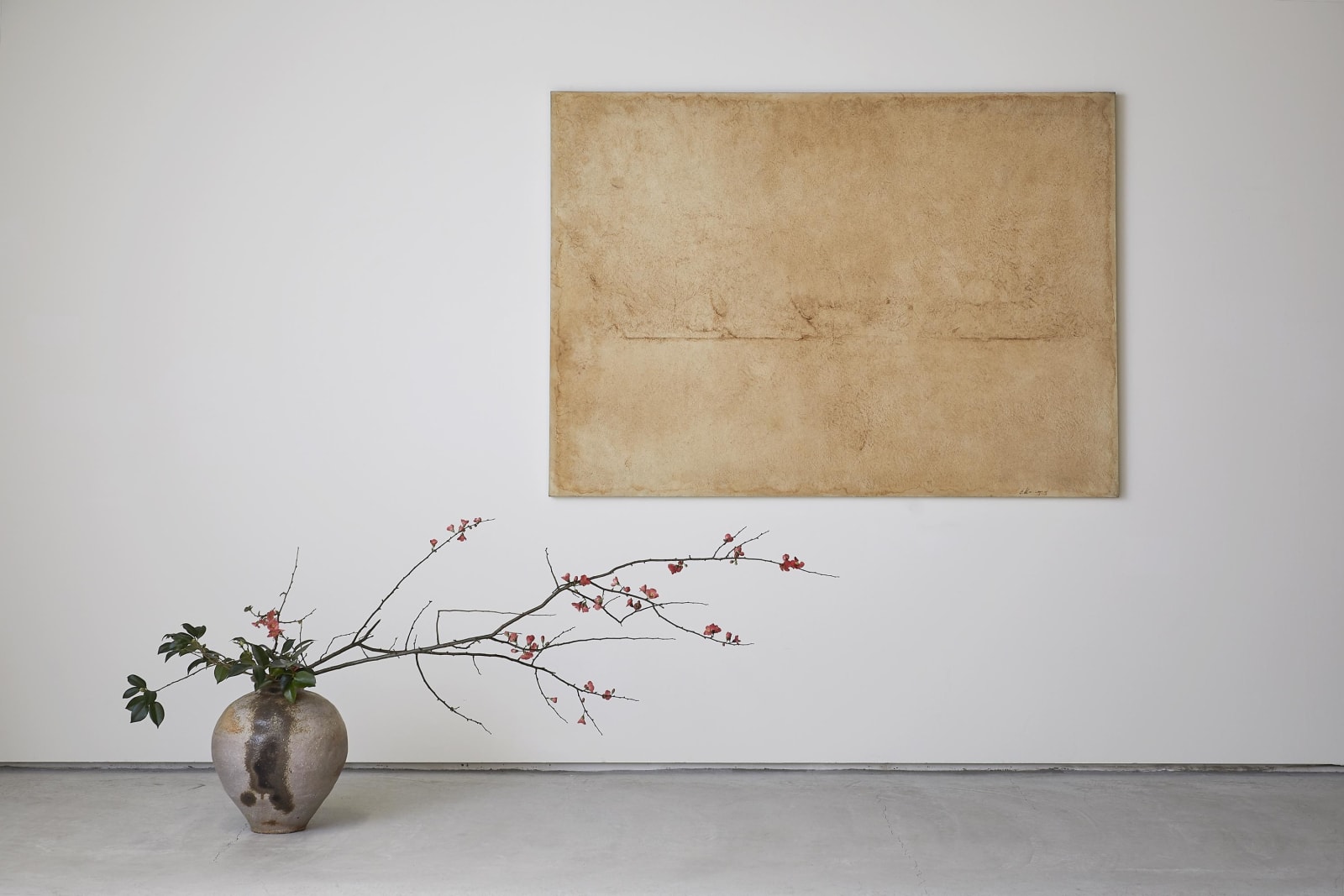Chung Changsup (1927–2011)
Tak 84052
Mulberry fiber on canvas
130 x 182 cm
Further images
Dansaekhwa literally means “monochrome painting,” and also refers to a loose, unofficial artistic movement burgeoning in Korea from the mid-1960s to the mid-1970s. Done in monochromatic composition and practiced by the refined approach to the materials, works of Dansaekhwa are a result of dedicating to establishing a new image of “Koreanness” in response to the postwar sociopolitical tumults inside and outside the country. Within such cultural context, Chung Changsup, who made a name for himself as a successful oil painter in his early twenties, was converted to, or “returned” to the tradition after encountering hanji (Korean paper) and tak (fiber from the mulberry tree, also the raw base of hanji) in the 1970s; he realized that the two which were rooted in tradition were the most appropriate medium to express the Korean ideas of nature, and his notion of “Koreanness”.
The present work, belonging to Tak series, is applied the water soaked tak pulp to canvas, shaping it in a quasi-sculptural fashion to create a richly variegated texture. The soaking process determines the tone and cadence of each work in this series. As Chung describes his creation as “like the surface of granite that has assimilated to time, ‘material,’ ‘time,’ ‘self,’ and ‘nature’ shall be encountered through traces, smears, and chance,” Tak series presents a coexistence of the self and the nature, as well as reflects Chung’s interpretation to “Koreanness”—the harmony between oriental spirituality and material.
Chung Changsup (painter; 1927–2011)
Cheongju-born Korean painter. Graduated from the College of Fine Arts of Seoul National University in 1951. A pioneer of Dansakehwa (monochrome-painting) movement in the 1970s, the concept of which was based on the abstract impulse of reduction and the idea of returning to an origin. Best known for his ceaseless exploring the identity of Korean painting with abstract art combining the traditional materials and the indigenous aesthetics. One of the six Korean artists whose works were exhibited at Tate Gallery Liverpool in 1992 and had a retrospective at National Museum of Contemporary Art, Korea in 2010.
The present work, belonging to Tak series, is applied the water soaked tak pulp to canvas, shaping it in a quasi-sculptural fashion to create a richly variegated texture. The soaking process determines the tone and cadence of each work in this series. As Chung describes his creation as “like the surface of granite that has assimilated to time, ‘material,’ ‘time,’ ‘self,’ and ‘nature’ shall be encountered through traces, smears, and chance,” Tak series presents a coexistence of the self and the nature, as well as reflects Chung’s interpretation to “Koreanness”—the harmony between oriental spirituality and material.
Chung Changsup (painter; 1927–2011)
Cheongju-born Korean painter. Graduated from the College of Fine Arts of Seoul National University in 1951. A pioneer of Dansakehwa (monochrome-painting) movement in the 1970s, the concept of which was based on the abstract impulse of reduction and the idea of returning to an origin. Best known for his ceaseless exploring the identity of Korean painting with abstract art combining the traditional materials and the indigenous aesthetics. One of the six Korean artists whose works were exhibited at Tate Gallery Liverpool in 1992 and had a retrospective at National Museum of Contemporary Art, Korea in 2010.









